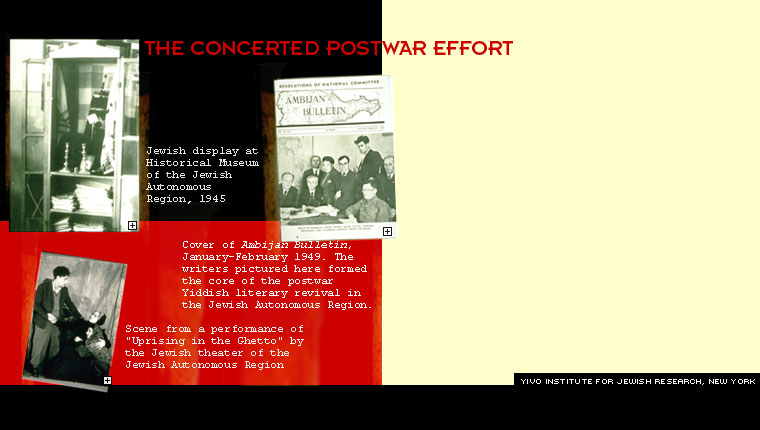| |
 |
The Yiddish daily newspaper Birobidzhaner shtern was revitalized. |
|
| |
 |
Yiddish once again became an obligatory subject in schools. Nowhere else in the Soviet Union did this occur. |
|
| |
 |
The Jewish Theater expanded its activities and performed plays about the Holocaust. |
|
| |
 |
A Yiddish publishing house was established, which produced literary journals and textbooks in Yiddish. |
|
| |
 |
A Jewish Division of the Historical Museum of the Jewish Autonomous Region opened in 1945. |
|
| |
 |
A synagogue, albeit without a rabbi, opened in September 1947. Jews in Irkutsk donated a Torah scroll, and some 400 to 500 persons attended Rosh Hashanah services that year. |

